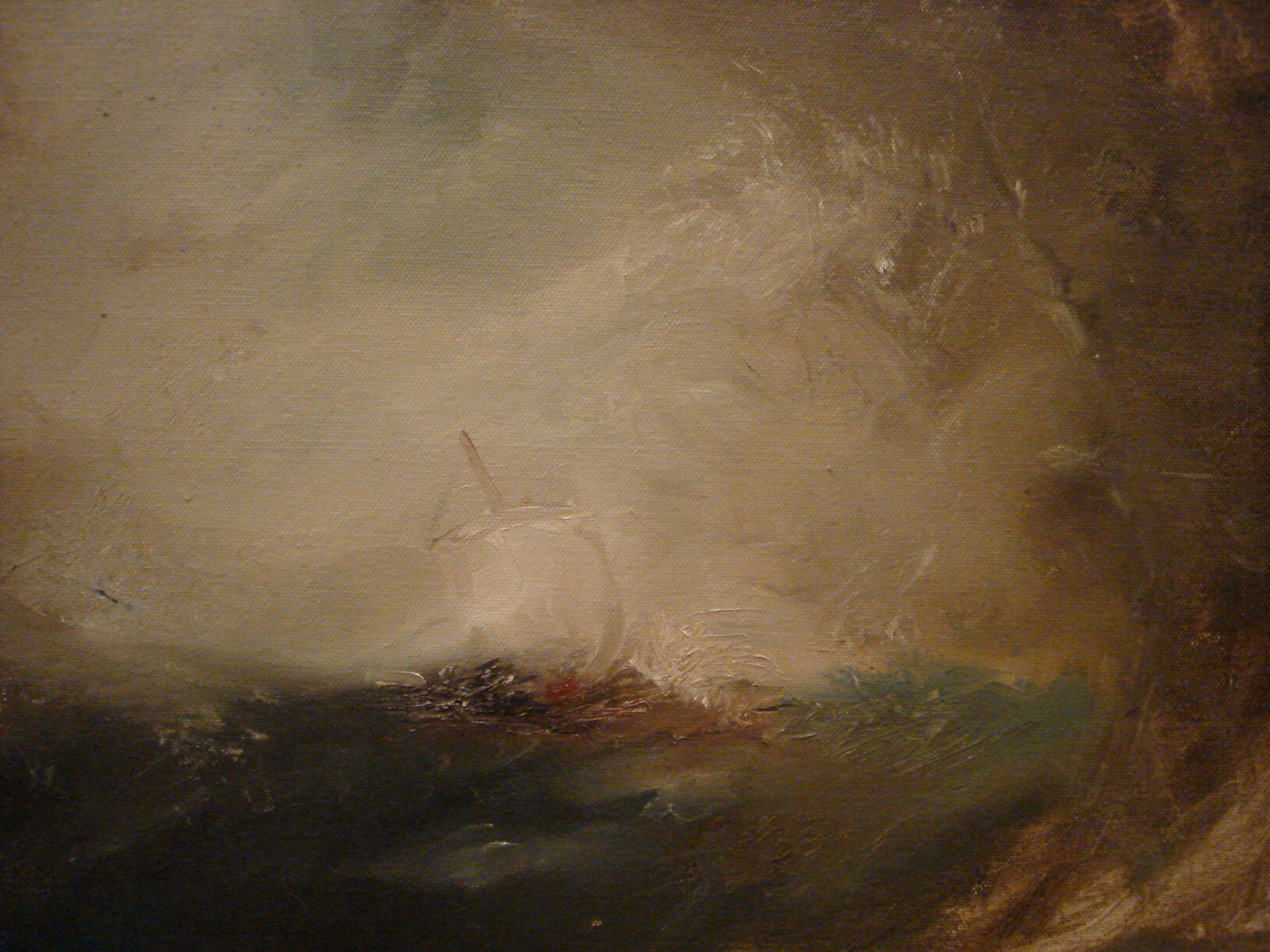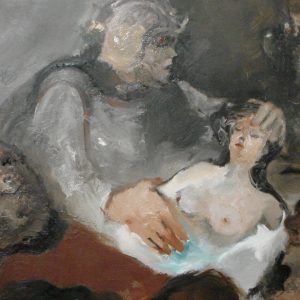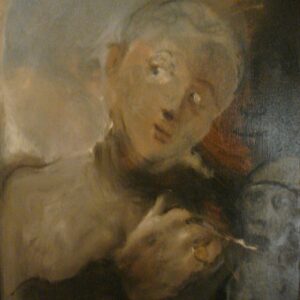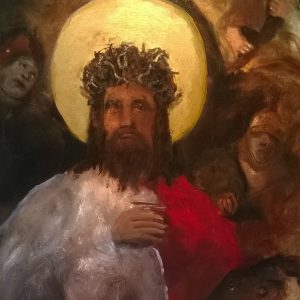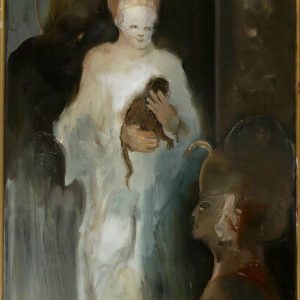Description
Artist/Maker: Kostas Kampouropoulos (1939-2018)
Object/Materials and Techniques: Oil on canvas
Date: Painted between 2007-2016
Dimensions: H. 14 cm. x W. 18 cm.
Art style/genre: Waterscape/Surrealistic expressionistic structures/Abstract art/Tonalism
Current Location: Private collection
Curator’s note: A waterscape painting inspired by the Ancient Hellenic mythology depicting the Styx which was considered one of the rivers -named after its ruler deity and goddess- that formed the boundary between Earth and the Underworld (known as Hades).
According to Hesiod’s description in his epic poem Theogony (c. 730-700 BC.), the Styx, later, was identified with the stream now called Mavronéri (in hellenic: Black Water) near Nonacris, a town of ancient Arcadia, in the Aroania Mountains, situated in what is now Achaea on the Peloponnesian peninsula (near modern Sólos).
The ancients believed that the river’s water was poisonous and there is also a legend that Alexander the Great was poisoned by Styx water.
A ship can be detected in an agonizing attempt to approach ashore. Its form, distinct but nearly transparent, fades into the windy mist. The sail is hoisted in order for the ship to overcome the wild wind force, float outward and eventually reach the bank.
The simplification of forms abstracts the water scene, making it almost unrecognizable. Furthermore, the abstract and unfinished nature of this depiction is suggested by the vague shadows of distant structures and faint light. The Styx’s waters become a black stream of darkness while the shore a dark brown indistinct shape. The muted sky predominates the upper two thirds of the painting reflecting the empty space of an atmospheric haze.
Employing a moody hued colour palette and reducing the elements of the scene, Kostas Kampouropoulos places the viewer in an uncertain and inhospitable space. The ship and her struggle against the storm become our focus. We stand in the river bank, straining to see clearly. The swirling colour from the right creates a fragmentary view and the effect is akin to the eye of a storm creating a scene that can be an actual place, but still ambiguous and timeless, just like the Ancient Hellenic mythology.
In this work, Kostas Kampouropoulos, capitalizing on his influence from classical music, emulates musicality through an evocative and atmospheric effect that reminds a lot of the Tonalist style. Despite the emotional power of the applied forces of the storm that provokes worry and emotional tension to the viewer, the work relies on subtle tonal gradations rather than dramatic contrasts, creating, masterfully, an overall atmospheric colour realm of ‘musical’ harmony and balance.
Curator’s highlight detail: Kostas Kampouropoulos’ characteristic use of sienna (reddish hue) in the very centre of the painting, on the vessel, contrasted with the dark earthly colours and the various versions of ‘Van Dyke’ coffee that prevail, gives the painting a distinct classical splendour.
Bibliographic References:
- Κωνσταντίνος Ι. Καμπουρόπουλος, Για τη Ζωγραφική, Αθήνα, Εκδοτικός Οργανισμός Πάπυρος, 2013, p. 52, 65, 257, pp. 84-85, 204-205, 224-225.
- Hesiod, Theogony, trans. Hugh G. Evelyn-White, 1914, ff. 383.
- Jean-Pierre Vernant, Myth and Society in Ancient Greece, Zone Books, 1988.
- Kevin J. Avery & Diane P. Fischer, American Tonalism: Selection from the Metropolitan Museum of Art and the Montclair Art Museum, Burlington Magazine, Vol. 142, 2000, p. 453.

